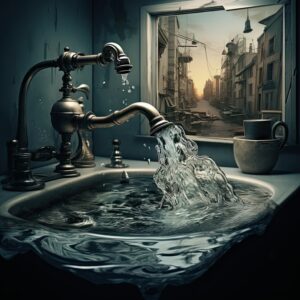Navigating the Restoration Process After Water Damage
Water damage can cause immense distress for homeowners. Whether it’s from a burst pipe, a leaking roof, or a natural disaster, the aftermath can be overwhelming. Navigating the restoration process after water damage requires expertise, patience, and a clear understanding of the steps involved. In this comprehensive guide, we’ll delve into the intricacies of restoring your home or property after water intrusion. From assessing the damage to hiring restoration contractors and overseeing the repairs, we’ll cover it all.
Understanding the Scope of Water Damage
Before diving into the restoration process, it’s crucial to understand the scope of the water damage. Water can wreak havoc on your property, causing structural damage, mold growth, and compromising the integrity of your home. Here’s what you need to know:
Types of Water Damage
Clean Water: This type of water damage originates from sources like broken pipes, rainwater, or condensation.
Grey Water: Grey water contains some contaminants and may arise from appliances like washing machines or dishwashers.
Black Water: The most hazardous type, black water contains sewage, chemicals, or other harmful substances. It typically comes from sewage backups, flooding, or storm surges.

Hiring Emergency Restoration Services
Hiring emergency restoration services is vital to mitigate further damage and begin the restoration process promptly. Here’s what to consider when selecting restoration contractors:
Experience and Expertise
Look for restoration contractors with extensive experience in handling water damage emergencies. Verify their certifications and training in water damage restoration techniques.
24/7 Availability
Emergencies don’t wait for business hours. Choose restoration contractors who offer round-the-clock services to respond to emergencies promptly.
Advanced Equipment and Techniques
Ensure that the restoration company utilizes state-of-the-art equipment and techniques for water extraction, drying, and dehumidification. This ensures efficient and thorough restoration efforts.
The Restoration Process
Once emergency restoration services are on site, the restoration process can begin in earnest. Here is a summary of the standard procedures typically undertaken:
Water Extraction
The first step is to remove standing water from the affected areas using powerful pumps and extraction equipment. Quick water extraction helps prevent further damage and reduces the risk of mold growth.
Drying and Dehumidification
After water extraction, the drying process begins. Industrial-grade dehumidifiers and air movers are used to remove moisture from the air and surfaces. This step is crucial for thoroughly drying out the affected areas and preventing mold and mildew growth.
Cleaning and Sanitization
Once the area is dry, thorough cleaning and sanitization are necessary to remove any remaining contaminants. Restoration contractors use specialized cleaning agents to disinfect surfaces and restore the property to its pre-damaged condition.
Tips for Preventing Future Water Damage
While water damage emergencies can be unpredictable, there are proactive steps you can take to minimize the risk of future incidents:
Regular Maintenance Checks
Conduct routine inspections of your property, including plumbing, roofing, and appliances, to identify potential issues before they escalate into water damage emergencies.
Address Plumbing Problems Promptly
Leaky pipes, clogged drains, and faulty plumbing fixtures can lead to water damage if left unchecked. Address plumbing issues promptly to prevent water infiltration and damage.
Install Water Detection Devices
Consider installing water detection devices, such as leak sensors and automatic shut-off valves, to alert you to potential leaks and minimize water damage.
Maintain Proper Drainage
Ensure that gutters and downspouts are clear of debris and direct water away from your home’s foundation to prevent water seepage into basements or crawl spaces.
Wrap-up
Navigating the restoration process after water damage requires proactive planning, prompt action, and expert assistance. By understanding the steps involved, hiring reputable restoration contractors, and taking preventative measures, you can mitigate the impact of water damage on your property. If you find yourself facing a water damage emergency, don’t hesitate to contact emergency restoration services for immediate assistance. Remember, swift action is key to minimizing damage and restoring your home to its pre-damaged condition. If you’re in need of professional water damage restoration services, contact us today for prompt and reliable assistance. Don’t let water damage wreak havoc on your property – trust our experienced team to restore your home and peace of mind.
FAQs
Q: How long does the restoration process take?
A: The duration of the restoration process depends on the extent of the damage. Minor water damage repairs may take a few days, while more severe cases could take weeks to complete.
Q: Will my insurance cover water damage restoration?
A: The majority of homeowners’ insurance policies provide coverage for water damage resulting from unexpected and unintended incidents, like burst pipes or storms. However, coverage may vary, so it’s essential to review your policy and contact your insurance provider to initiate a claim.
Q: Can I handle water damage restoration on my own?
A: While minor water damage cleanup may be feasible for homeowners, extensive restoration efforts require professional expertise and equipment. Attempting DIY restoration without proper training and tools can lead to further damage and health risks.
